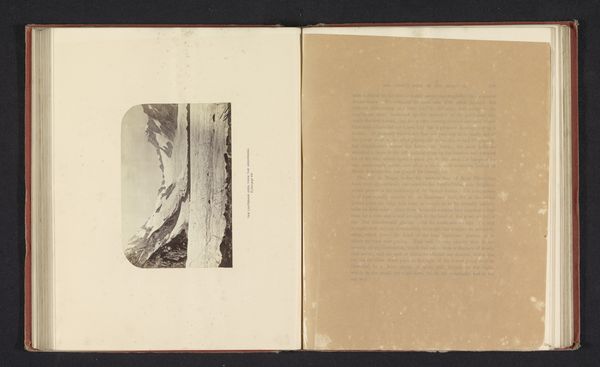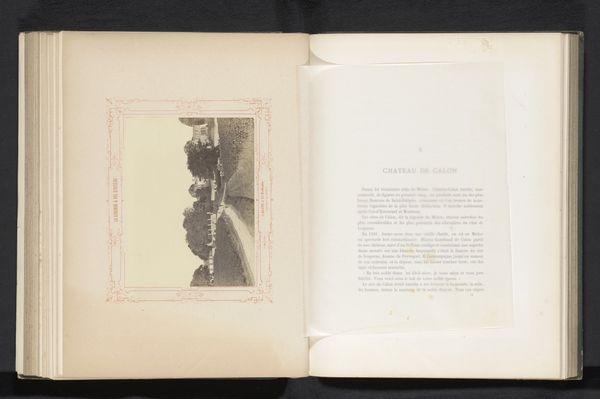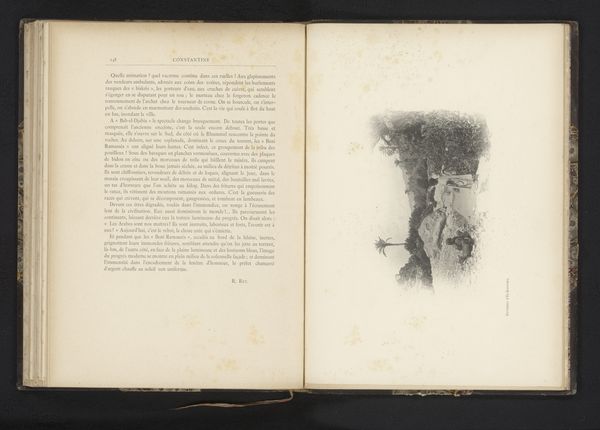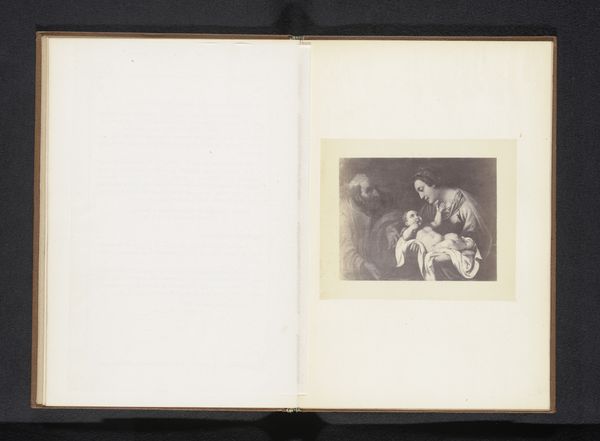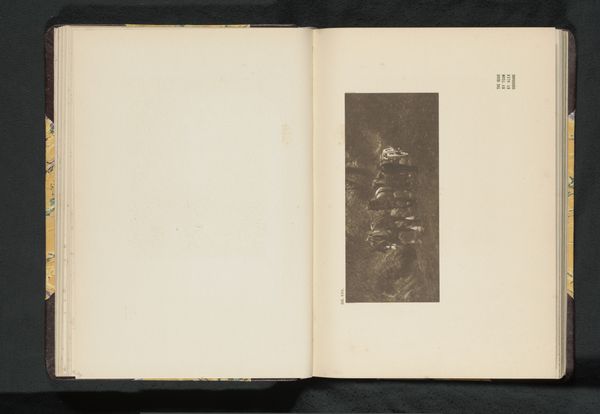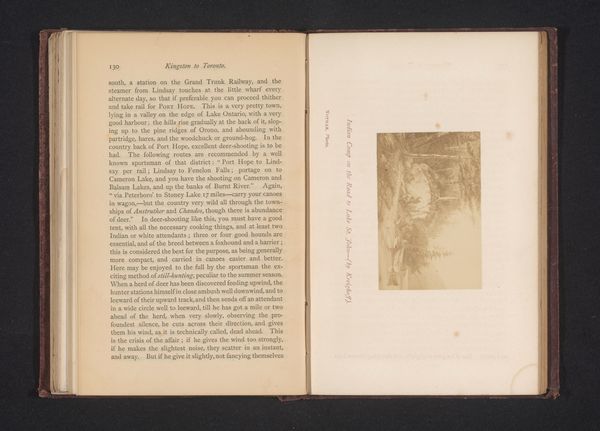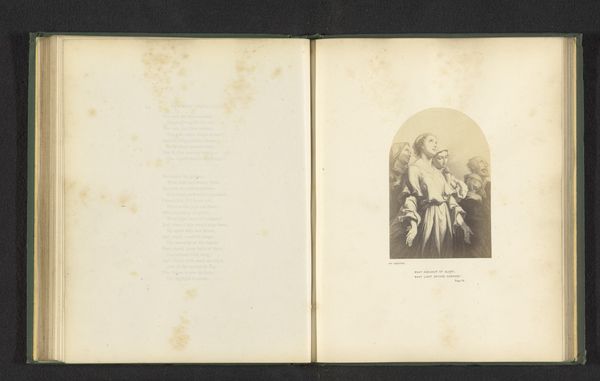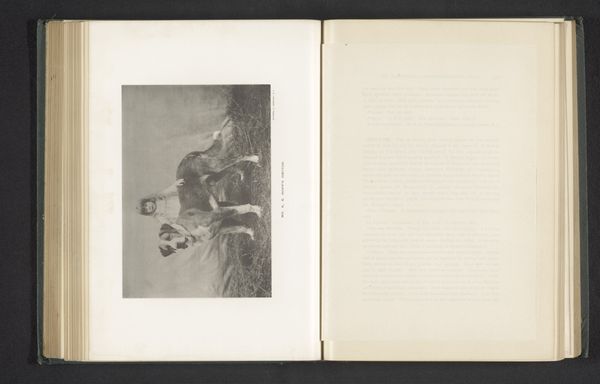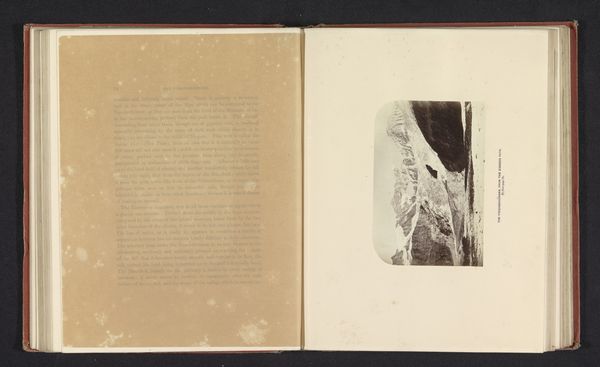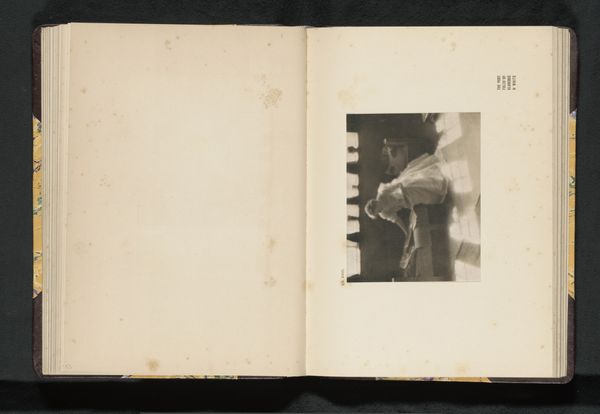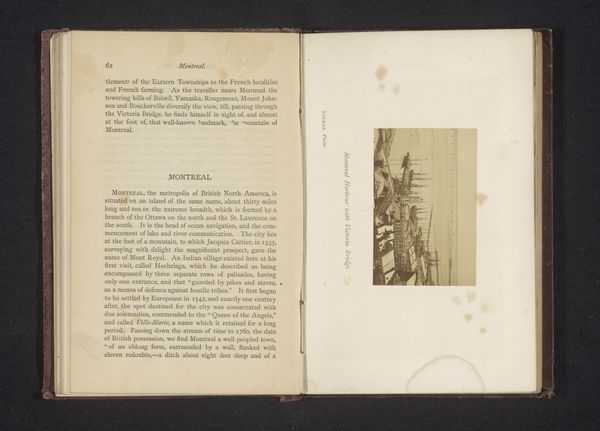
Dimensions: height 90 mm, width 133 mm
Copyright: Rijks Museum: Open Domain
Curator: Look at this captivating image from before 1866, a gelatin-silver print titled "The Jungfrau Joch" by Ernest Edwards. It appears as part of an opened book. Editor: Wow, it’s stark! A monochromatic dreamscape, almost haunting in its simplicity. I feel the bite of the wind just looking at that imposing mountainside. It’s like a visual poem about the sublime. Curator: Absolutely, and it’s crucial to see this photograph within its historical context. In the mid-19th century, mountaineering was becoming increasingly popular among the European elite. This photograph captures not only the landscape itself, but also the spirit of exploration, of conquering nature that was so popular amongst wealthy white Europeans at the time. Edwards himself contributed greatly to discourses surrounding British national identity, class dynamics, race, and gender roles of the period, through visual media. Editor: The open book format is doing something to me. It gives the image an intimate feel. It’s as if we're intruding on a private meditation or maybe flipping through a seasoned explorer’s diary? All that rock-face just feels…primordial, maybe even challenging ideas of gender roles at the time! Curator: Precisely. Photography itself was still a relatively new medium at this point. This work can be viewed through a lens of colonialism, especially how visual art reinforced dominance over nature and "other" cultures, positioning photography as a scientific tool of exploration but also a technology through which these systems of oppression could be perpetrated. This image can be interrogated as a commentary on 19th-century scientific advancement intertwined with capitalist ideals. Editor: All this intellectualizing gives me a headache. I will say this photograph feels like the quiet before a storm, both literally and metaphorically. Curator: Considering all those nuances helps us see beyond its initial aesthetic appeal to understand its historical implications, challenging dominant ideologies embedded within the work, in order to invite critical engagement with intersectional themes related to identity. Editor: So true. I mean it’s like looking at a piece of history through a glacier's lens. It's not just about what’s there, but also about what it suggests and signifies through the filters of contemporary socio-political critique. Curator: Indeed. "The Jungfrau Joch," far more than just a landscape, encapsulates a complex web of societal dynamics of its time, offering a critical lens through which we view intersectional narratives in visual media, then and now.
Comments
No comments
Be the first to comment and join the conversation on the ultimate creative platform.


